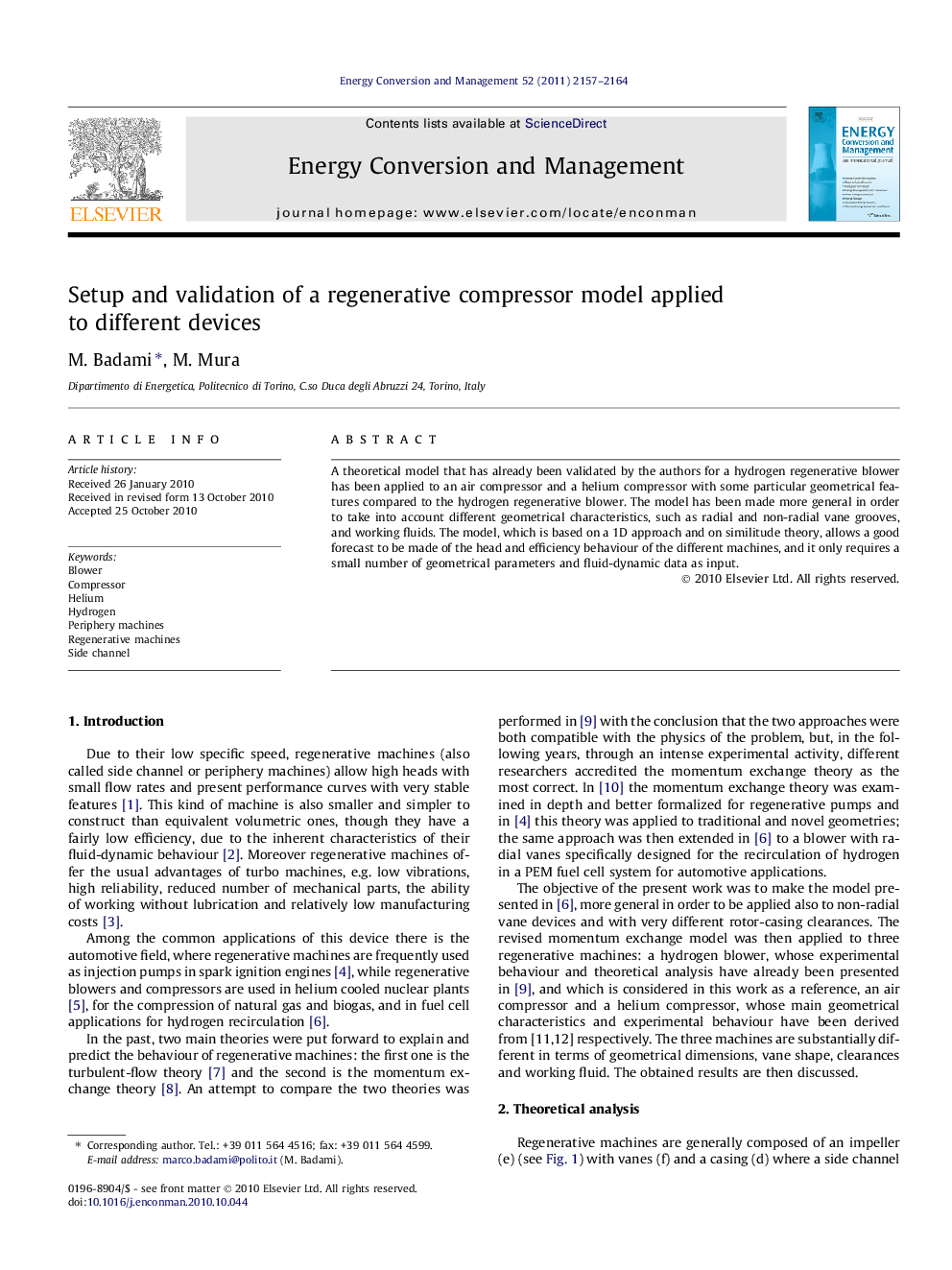| Article ID | Journal | Published Year | Pages | File Type |
|---|---|---|---|---|
| 772362 | Energy Conversion and Management | 2011 | 8 Pages |
A theoretical model that has already been validated by the authors for a hydrogen regenerative blower has been applied to an air compressor and a helium compressor with some particular geometrical features compared to the hydrogen regenerative blower. The model has been made more general in order to take into account different geometrical characteristics, such as radial and non-radial vane grooves, and working fluids. The model, which is based on a 1D approach and on similitude theory, allows a good forecast to be made of the head and efficiency behaviour of the different machines, and it only requires a small number of geometrical parameters and fluid-dynamic data as input.
Research highlights► A theoretical model of regenerative machines is applied to three different blowers and compressors. ► The model is based on the momentum exchange theory and on the similitude theory of turbo machines. ► The effect of leakages and loss coefficients is studied in depth. ► The model results show a good agreement with the experimental data.
